


Important ecological processes that occur in the Jocko River ecosystem include:
Within the Jocko River watershed, some ecological processes are impaired due to historical and present land and water uses. River and floodplain restoration actions are intended to restore these processes to their maximum practical potential. Monitoring specific restoration treatments provides data that allows managers to determine whether ecological processes are improving after restoration work has been completed in a reach of the Jocko River. Adaptive management is a way of managing a restoration project where information about previous restoration phases is used to modify designs for later restoration phases. The discussion below summarizes how this adaptive decision-making process has been used in the Jocko River watershed by the Confederated Salish and Kootenai Tribes and their interdisciplinary team of scientists.

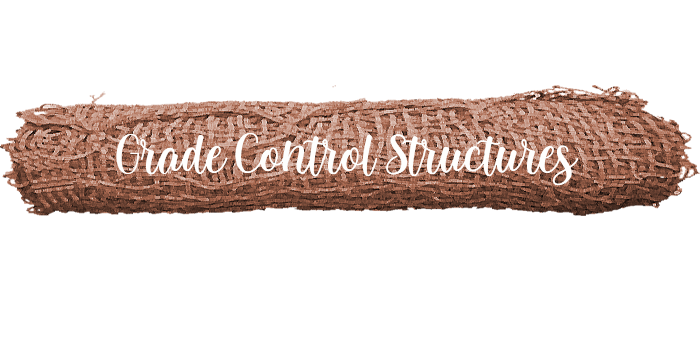
Technique: Grade Control Structures
Processes: Self-sustaining channel pattern, profile, and dimensions
Description: Cobble tailout structures and large rock cross vane structures were installed in the channel in Phase I of the Demonstration Reach project area to provide grade control.
Monitoring: Monitoring indicated that cobble structures may have downcut during flood events leaving the floodplain one to two feet above bankfull flow.
Adaptive Management Strategy: New designs, implemented during Phase II, include a submerged boulder matrix/cobble tailout grade control structure that should be as effective in grade control as rock cross vanes, but less visually intrusive.
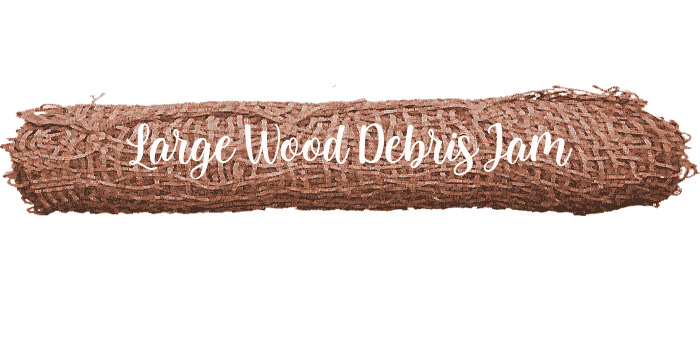
Technique: Large Wood Debris Jams
Processes: Channel pattern, profile, and dimensions; Streambank stability
Description: A series of securely anchored root wads and logs constructed at the streambank that extend out into the channel to reduce energy on streambanks.
Monitoring: Some large wood debris jams required maintenance due to scour (eddy erosion) on the upstream edge where soil lifts were tied into the structure.
Adaptive Management Strategy: Large wood debris jams were changed to include a low-head log vane when tied into bioengineered banks. The low head vane will eliminate the eddy and scour.
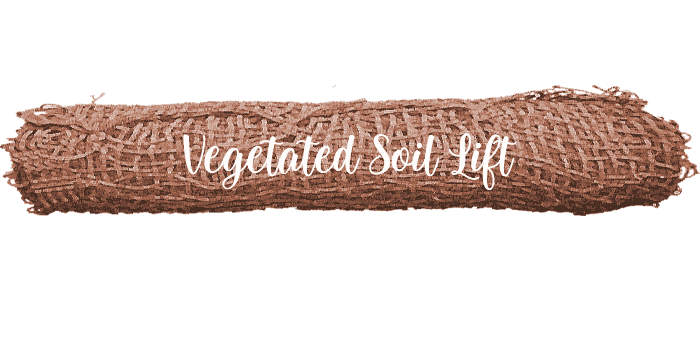
Technique: Vegetated Soil Lift
Processes: Streambank stability; Plant community composition; Channel pattern, profile, and dimensions
Description: Vegetated soil lifts are a revegetation and bank construction technique that combines layers of dormant willow cuttings with fabric-wrapped soil to revegetate and stabilize stream banks. Soil is wrapped within two layers of biodegradable coconut fiber (coir) fabric to hold the soil in place while vegetation becomes established in the relatively high stress land/water interface. The outer, woven layer of coir fabric has high tensile strength to better withstand high velocities and turbulent flows and the inner layer includes tightly packed coir fibers that function as a filter to hold soil in place while vegetation establishes. To enhance filtering and help define the bank shape, each soil lift is faced with a coir fascine or log. Building soil lifts with a suitable bank toe consisting of appropriately sized cobble material or a matrix of cobble and logs limits the amount of scour under the soil lift and prevents slumping.
Monitoring: At Phase I of the Demonstration Reach, the survival of willow cuttings on soils lifts decreased in the years after construction, but the percent cover of willows increased on all but one soil lift. The decrease in survival of cuttings in some structures is likely due to the timing of initial installation, which occurred in late August and early September of 2004 when willows were not dormant. Some undesirable weedy species were observed on soil lifts installed at Demonstration Reach Phase I. The toe of some soil lifts was undermined, or scoured out during runoff events resulting in slumping of the soil lift.
Adaptive Management Strategy: To address survival of willow cuttings installed in soils lifts, willow cuttings will be collected and installed during early spring when feasible. If not feasible, willow cuttings will be collected during early spring (before April 1) and stored in cold storage until needed or planting in the vegetated soil lift will be supplement with rooted containerized plants. Weedy species on the soil lifts will be pulled by hand to limit adverse affects to willows and other desired species growing in the soil lift. To address undermining of the toe, a toe consisting of larger cobble material and log cribbing structure were incorporated into the toe construction prior to constructing the soil lift.
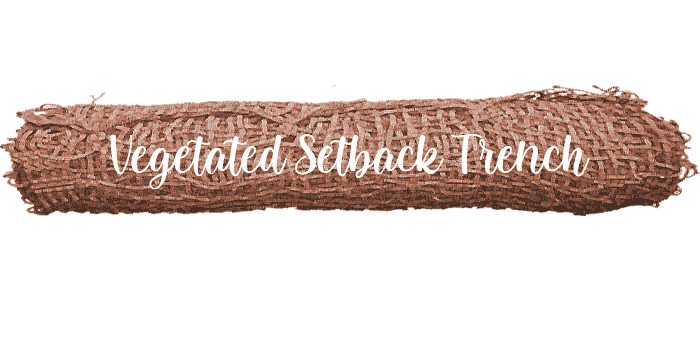
Technique: Vegetated Setback Trench
Processes: Streambank Stability; Plant community composition
Description: A trench was excavated approximately 20 feet back from the existing streambank, down to baseflow elevation of the channel. Wood (tree trunks) was placed in the bottom of the trench. Coir logs were placed at or slightly below the bankfull elevation and salvaged shrubs were placed near the bankfull elevation. The sides of the trench were lined with willow cutting with the base of cuttings placed below the bankfull elevation. The trench was backfilled to the base of the salvaged shrubs. Wood debris was placed on top of the backfilled trench surface which was also seeded. The intent of the treatment is to establish mature vegetation in the floodplain so that as the streambank erodes further it will meet with the vegetated trench that has had time to mature.
Monitoring: The treatment was implemented in spring 2008 and only preliminary observations are available. Preliminary observations show that transplanted shrubs are surviving and continuing to grow in the trench. Runoff events appear to raise groundwater elevations in the trenches which should support survival of the transplanted shrub material. Streambanks have not eroded to the trench location to date.
Adaptive Management Strategy: Continue monitoring to evaluate survival and growth of willow species and track streambank erosion rates toward the trench.
Setback trench with transplanted willow shrubs and willow cuttings along the front and back edges of the trench.
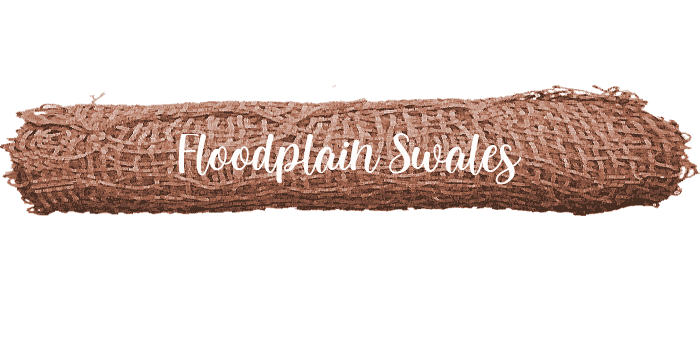
Constructed floodplain swales in the Demonstration Reach Phase II project area with floodplain woody debris.
Technique: Floodplain Swales
Processes: Microtopography; Plant community composition
Description: Floodplain swales occur naturally through portions of the Jocko River floodplain. Project construction at the Demonstration Reach also created floodplain swales by excavating depressions in constructed areas of the floodplain and at point bars constructed along channel.
Monitoring: Survival of naturally recruited species, such as cottonwoods and willows is higher in swales compared with point bars. Survival of containerized plants is higher in swales compared with other floodplain surfaces. Browse is reduced on containerized plants in swales compared with other floodplain surfaces. The photo below shows significant growth on plants installed in a natural floodplain swale at the Demonstration Reach project site.
Adaptive Management Strategy: Construct floodplain swales perpendicular to the channel in all large constructed floodplain surfaces. Continue to monitor floodplain swales for the following information: natural recruitment compared with other floodplain surfaces, containerized plant survival, browse and growth compared with other floodplain areas.